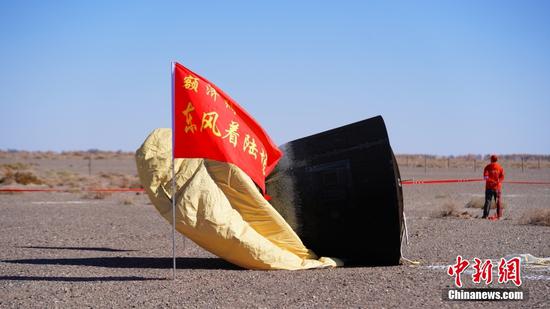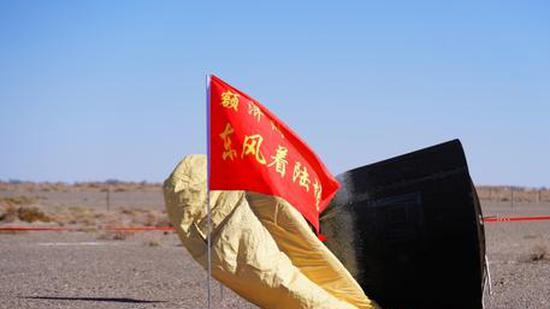New Momentum | Shijian-19's space seeds mark China's huge strides in mutational breeding

China successfully retrieves its first reusable and returnable test satellite, Shijian-19, at the Dongfeng landing site in north China's Inner Mongolia Autonomous Region at 10:39 a.m. (Beijing Time), Oct. 11, 2024,
(ECNS) -- China's first reusable and returnable satellite, Shijian-19, successfully returned to Earth recently after more than ten days of in-orbit. On Thursday, a batch of new "space seeds” carried by the satellite was delivered in Beijing.
Leveraging international cooperation frameworks like the Asia-Pacific Space Cooperation Organization and the Mekong-Lancang Cooperation, Shijian-19 carried plant germplasm from plants such as cotton, rape, melons, and fruits from multiple countries, including Thailand and Pakistan.
Liu Luxiang, deputy director of the Institute of Crop Sciences at the Chinese Academy of Agricultural Sciences (ICSCAAS), stated in a recent interview with China News Service that this is an important cooperative achievement in the field of mutational breeding within the Asia-Pacific region, bolstering regional food security.
Liu noted that China is at the global forefront in the field of mutational breeding. Over the past few decades, China has used space mutagenesis to cultivate new crop varieties, achieving significant social and economic benefits.
As early as 1987, China began space breeding research using returnable satellites. The 2006 launch of Shijian-8 was hailed as a dedicated “space train” for seeds.
Today, the ICSCAAS hall showcases rows of transparent jars containing crop varieties bred from space seeds, featuring traits like high yield, strong resistance to disease, and salt-tolerance.
Space seeds undergo rigorous screening to ensure that only the very best is selected. According to Liu, the seeds sent into space must either be have top-performing features with strong potential, including seed purity, genetic stability, and a high germination rate.
Liu also said that gene mutations in seeds during space travel are random, leading to greater diversity— a crucial factor in creating new germplasm resources.
The richer the germplasm resources are, the more options breeders have when developing new crop varieties, he said.
“By crossing the stabilized germplasm resources with cultivated varieties, we can enhance existing crops with superior traits, making good varieties even better,” said Liu.
Liu expects that the space seeds returned by the Shijian-19 satellite will yield more mutations to better meet modern agricultural needs.
He noted that the global food demand is steadily rising, and that developing new germplasm sources would be an effective approach to boost food production. Additionally, to tackle the effects of climate change on crops, especially staple crops, breeders need to obtain new mutation traits to create varieties that can adapt to changing environments.
Liu emphasized the potential need to select germplasm for healthier foods that meet people's
nutritional demands, such as starch resistant foods for those with hyperglycemia. Additionally,
through space mutagenesis, wheat and rice varieties with higher resistant starch can be picked
and developed.
“We not only need to ensure food security for over 1.4 billion people in China but also pay attention to global food security issues,” Liu stated. He expressed hope that Shijian-19 will bring more international cooperation to help developing countries, especially those in Africa, in addressing food security challenges. “This also reflects China's responsibility and commitment.”

